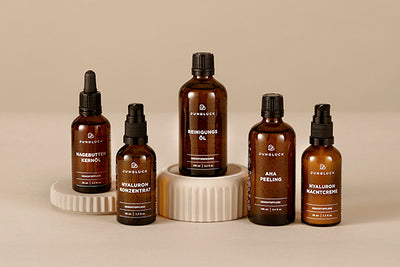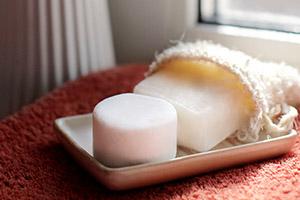It is very important for us to provide you with as much knowledge as possible and to help you better understand yourself and your body, especially your skin. For this reason, we have compiled important information and prepared it for you in such a way that you can easily recognize what your skin needs and how it functions.
However, it is still possible that the skin type vs. skin condition topic may raise a few question marks. That's why we'd like to take a closer look and explain the difference between these two very similar-sounding terms and what they mean for you and your skin.
- What does skin type mean?
- What is the difference to a skin condition?
1 What does skin type mean?
There are different specifications and also different interpretations of what a skin type actually is. Perhaps you are more familiar with skin types from the description of the Fitzpatrick skin type scale. However, this shows a different approach than we do. It focuses on the pigmentation of the skin and how well it can protect itself against the sun's rays.
Another approach is that a skin type shows the basic conditions of the skin, which are mostly genetically determined. This is more about how strong the sebum production of the skin is. Do the sebaceous glands work normally, excessively or are they rather sluggish? The varying activity of the glands ultimately leads to four different main skin types, which differ particularly in appearance, feeling and care.
The four main classical skin types are:
In fact, our genes play a big role here and we usually have to deal with this basis throughout our lives. So if we understand what our skin's basic needs are, we can address them very specifically. That is why it is so important to know about it.
Of course, there are other factors that influence your skin type. The most influential of these are our hormones! You can also find more factors here on our general skin type page.
Just as an example: If your hormone balance is out of balance and, for instance, your testosterone level is too high, this can lead to your sebaceous glands being stimulated and producing more sebum than you are used to. However, your normal baseline is a skin with less sebum.
In order to provide a comprehensible system here, we have decided on the above-mentioned four skin types and supplemented them with another four skin conditions.
2 What is the difference to a skin condition?
That is now the ultimate question. What exactly is the difference?
We understand it like this: the four classic skin types from the basis. Each of us more or less belongs to one of these skin types. If our skin is exposed to different influences it reacts accordingly. These influences can be the weather like cold, heat, dryness or humidity, nicotine, food, especially intolerances.
This creates the four additional skin conditions that can accompany one of the four main skin types:
These influences change our so-called initial skin and can dehydrate it, for example. Note that there is a difference between dehydrated skin and dry skin.
They can also make the skin more sensitive or impure, regardless of whether the skin was previously predominantly dry or oily, or whether it was combination skin. Another example is UV rays. They mature the skin, regardless of your skin type.
Skin conditions change over time and throughout your life faster than your skin type does. Because your skin type usually accompanies you throughout your life.
Understanding skin type and skin condition a little better is important for the overall understanding. This should help you to know your skin's needs and to use the right care products. Because regardless of skin type or skin condition, the right and appropriate care is crucial. How to care for your skin according to the different needs is explained on our skin type pages.
In case you still have questions about your skin type or condition, feel free to send us an email or contact us on Instagram. We will guide you on your way to your very own skincare range.
Finally, I would like to say that looking at your skin and finding out what it needs is always a snapshot. So every now and then, rethink your skincare routine, see if the products you're currently using cover everything, be mindful of your skin and most importantly, be mindful of yourself.
Take care!






Leave a comment